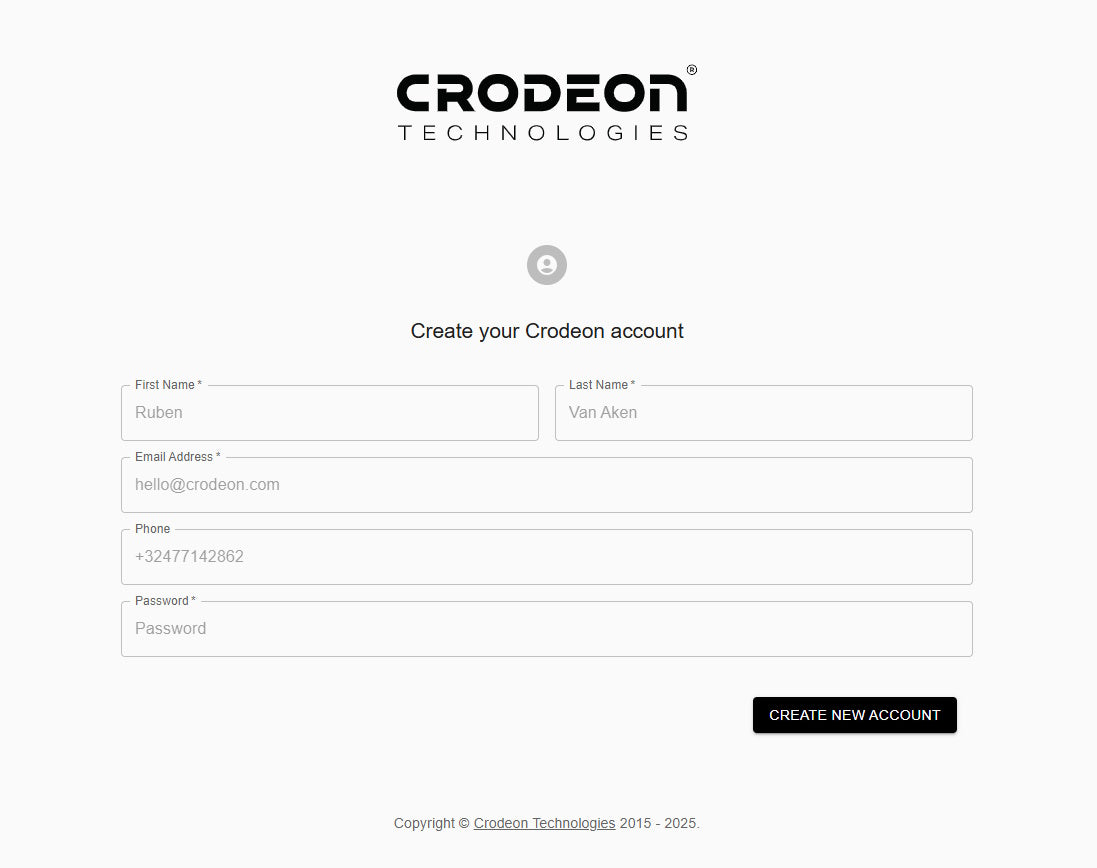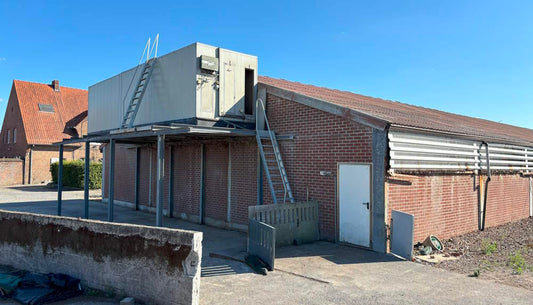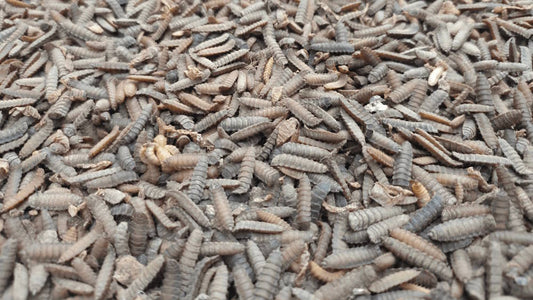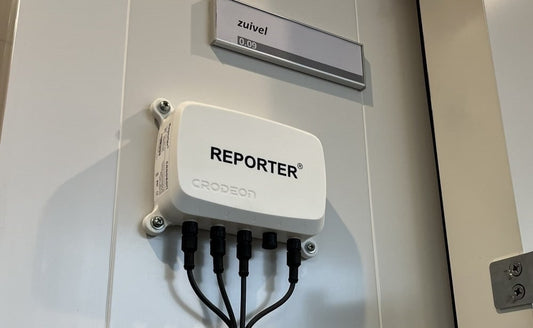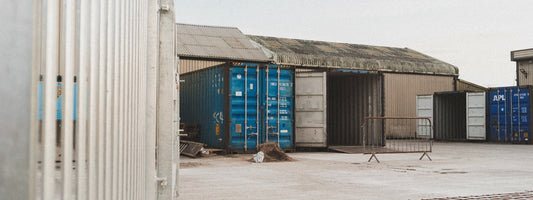Mesure de la luminosité dans les poulaillers, porcheries et autres étables
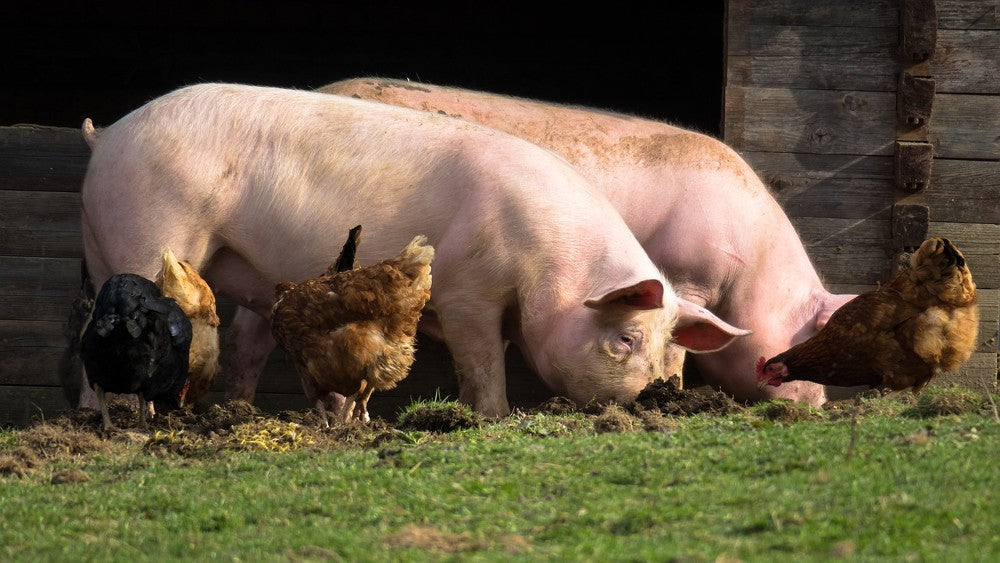
Vous avez donc besoin d'un capteur de lumière, mais vous ne savez pas lequel choisir. Il est important de se rappeler que le lux et le lumen diffèrent du par (pour les plantes). Ils ne sont pas identiques et ne peuvent pas être substitués.
Les capteurs de lux et les capteurs PAR pourraient tous deux être précieux pour votre installation. Dans ce blog, nous allons explorer plus en détail la mesure des lux, afin de vous aider à choisir le capteur adéquat.
Lumen
Une lampe émet une certaine quantité de lumière, exprimée en lumen. La portée et la direction dans lesquelles cette lumière est émise ne sont pas prises en compte.
Une lampe de 1000 lumens est très lumineuse lorsqu'elle est à 1 mètre de vous. Placez-la à 10 mètres et soudainement, la lampe n'est plus du tout aussi brillante. Cependant, la quantité de lumens n'a pas changé d'un iota.
Mesurer le lux
Le lux exprime la mesure dans laquelle une surface est éclairée, en tenant compte de la quantité de lumière qui atteint effectivement sa "cible". 1 lux équivaut à 1 lumen par m2.
Reprenons cette même lampe de 1000 lumens à 1 mètre et à 10 mètres de distance. À un angle de 70°, la valeur en lux est respectivement de 880 et 8,8, une grande différence.
Santé animale
Dans la section suivante, nous approfondirons la question des lux dans l'élevage de volailles et de porcs. Cependant, d'autres animaux (vaches, chevaux, chèvres…) ont également besoin de niveaux spécifiques de lux dans leurs enclos ou écuries pour rester en bonne santé. Mesurer les lux avec des luxmètres vous permet de construire votre étable ou enclos de manière optimale pour votre bétail.

Lux dans l'élevage de volailles
L'élevage de poulets nécessite une intensité lumineuse minimale, variable selon le type de poulet. Habituellement, un minimum de 20 lux est recommandé pour les poulets. Ces 20 lux doivent être mesurés à hauteur des poulets, pas à hauteur d'homme !
La glande pituitaire dans le cerveau du poulet est fortement stimulée sous l'influence de la lumière. Cette glande affecte les hormones qui contrôlent la ponte des œufs. Il est important de noter qu'il n'y a pas de consensus clair sur le niveau de lumière dont les poulets ont besoin.
Les jeunes poussins ont besoin de plus de lumière pour se familiariser avec leur enclos, ils doivent pouvoir localiser leur nourriture et leur eau. Un minimum de 30 lux est recommandé pour cette étape pour les poussins destinés à la ponte. Les poussins destinés à la consommation nécessitent au moins 10 lux mais pas plus de 20 lux à ce stade.
Une fois que les animaux sont plus âgés et familiers avec leur enclos, moins de lumière est nécessaire pour qu'ils se repèrent. Aussi peu que 5 lux suffisent dans ce cas. Il semble également que les animaux plus âgés ressentent moins le besoin de niveaux de lumière élevés que les plus jeunes. Le niveau de lumière influence la vitesse à laquelle les poulets mangent, ce qui influe évidemment sur leur croissance.
La mesure des lux peut se faire avec un luxmètre. Ce luxmètre peut être connecté à un système autonome et mobile comme le Reporter, ou à un système intégré dans l'enclos.
Les dindes nécessitent des niveaux de lumière similaires une fois qu'elles sont familières avec leur enclos. Lorsqu'elles se familiarisent avec leur environnement, elles ont besoin d'environ 100 lux. Après environ cinq jours, il convient de réduire les niveaux de lumière à 20 lux, ce qui est suffisant.

Lux dans l'élevage porcin
Selon les réglementations de bien-être de l'UE, les porcs doivent bénéficier d'au moins 40 lux dans leurs enclos pendant au moins 8 heures par jour. Les porcs doivent pouvoir identifier leurs congénères afin de communiquer avec eux. Ils doivent également être capables de voir leurs mangeoires et abreuvoirs. Des études ont montré que la production de mélatonine chez les porcs cesse à partir de 40 lux. Cela signifie que, pour un porc, 40 lux sont considérés comme un environnement lumineux.
Les porcs préfèrent naturellement des niveaux de lumière plus bas. Il convient donc d'éviter une lumière trop intense. Pour encourager les porcs à dormir et se reposer, les zones de couchage de leurs enclos doivent être faiblement éclairées. Lors d'études, de jeunes porcs exposés à différents niveaux de lux ont montré une préférence claire pour passer du temps dans des zones plus sombres de 4 lux et moins pour dormir et se reposer. Il a également été démontré que plus de 50 lux peuvent augmenter le stress chez les jeunes porcs. Les porcelets élevés sous 120 lux étaient plus actifs que ceux élevés dans des environnements plus sombres. Cependant, leurs analyses sanguines ont clairement indiqué qu'ils étaient en moins bonne santé que le second groupe. Il est cependant important de noter que les porcs n'ont pas peur de la lumière.

Les niveaux de lumière peuvent même affecter la reproduction. Les truies soumises à 70-100 lux ont donné naissance à plus de porcelets et à des porcelets plus lourds que celles exposées à 2-6 lux et 10 lux. Le fait de maintenir les porcs dans des conditions de forte luminosité de 400-700 lux a également montré que les femelles avaient un cycle reproductif plus rapide après l'arrêt de la lactation, les rendant fertiles plus rapidement.
Ne pas fournir aux porcs un éclairage approprié peut affecter leur bien-être, en augmentant le stress et l'agitation. Une lumière trop vive (2500 lux) peut même causer des dommages oculaires et une perte de poids. La surveillance et la mesure des lux dans les porcheries sont donc un élément vital de tout système de surveillance du bétail.
Nous ne devrions pas trop essayer de juger les niveaux de lumière avec nos yeux humains lorsqu'il s'agit de porcs. Les porcs se sont révélés moins sensibles à la lumière rouge que nous. Un éclairage avec une teinte plus rouge peut donc aider les humains à mieux voir dans l'enclos, tandis que les porcs considèrent encore la zone comme assez sombre.
Comment mesurer les lux ?
Lorsque vous mesurez les lux, il est important de garder à l'esprit pour qui vous souhaitez mesurer les lux et s'il y a de la lumière provenant des fenêtres ou d'autres zones.
- La mesure des lux doit toujours se faire à la hauteur des yeux des animaux dans l'enclos ou la ferme.
- Veillez à ce que tous les appareils d'éclairage fonctionnent et soient propres pour obtenir une mesure la plus précise possible.
- Mesurez plusieurs fois au même endroit, en tenant compte de la possibilité de lumière ambiante.
- Il peut être plus facile de mesurer la nuit car la présence de lumière du jour peut être exclue.

Votre propre système de surveillance mobile
Que vous cherchiez à surveiller votre porcherie ou votre enclos à poulets, il existe un capteur adapté à vos besoins. Il est important de surveiller votre ferme à distance 24h/24 et 7j/7. Vous souhaitez être averti si l'éclairage tombe en panne, plongeant votre ferme dans l'ob scurité. En outre, vous voulez pouvoir analyser si vos valeurs de lux sont réellement au bon niveau. Des niveaux de lux incorrects dans votre enclos pourraient provoquer du stress dans la ferme, nuisant à vos animaux à long terme. Ne pas surveiller votre éclairage est tout simplement une occasion manquée.
Un système de capteurs distant, mobile et autonome vous permet de mesurer les lux. Un tel module de capteur est notre système plug & play Reporter. Reporter envoie ses relevés dans le cloud, vous permettant de vérifier votre installation en temps réel. De plus, toutes les données sont enregistrées et peuvent être exportées vers Excel. Les données disponibles vous permettent d'optimiser et d'analyser autant que vous le souhaitez.
Souhaitez-vous combiner la mesure des lux avec une alarme Smart Livestock ou cherchez-vous à brancher vos capteurs existants à un système de surveillance à distance ? Veuillez nous contacter et nous examinerons les différentes options pour votre cas spécifique.
Sources :
De combien de lumière avez-vous besoin ?
Lumière artificielle dans l'élevage de volailles
Le site du porc : Éclairage pour les porcheries
Dr. Nina Taylor : Éclairage pour les porcheries
Éclairage dans les bâtiments porcins : Les principes
Éclairage dans les bâtiments porcins : En pratique
Environnement contrôlé pour le bétail
L'éclairage comme facteur d'influence du bien-être et de la production des porcs


